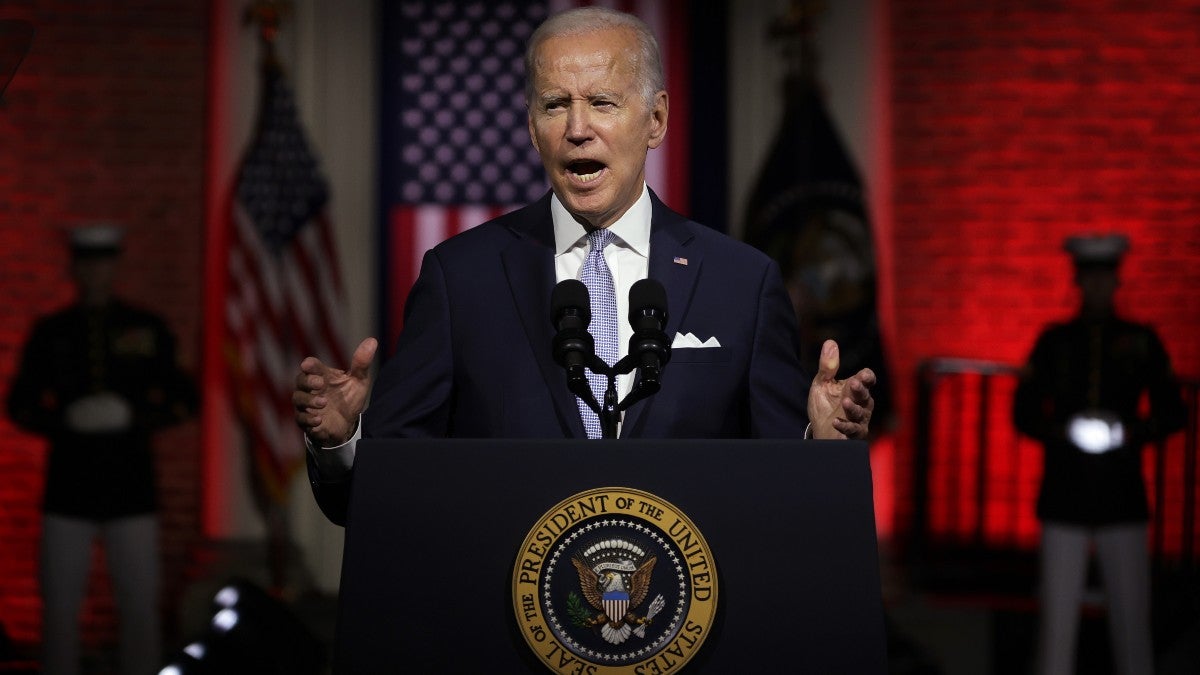
If Elon Musk actually sticks to his announcement from earlier this month, then at some point on April 1 — which on the west coast, as of this writing begins in approximately 45 minutes — Twitter’s account verification system will end; at that point, all so-called “legacy” verified accounts will lose their blue checkmarks, and only people willing to pay $8 a month for a subscription to Twitter Blue will get to have them.
But as we’ve seen all week, the plan to convert “legacy” verified account holders into paid subscribers doesn’t appear, so far, to be a rollicking success. Case in point, Musk’s apparent social media rival, President Joe Biden. In a memo, the White House informed staffers that it will not reimburse people who sign up for Twitter Blue. “Staff may purchase Twitter Blue on their personal social media accounts using personal funds,” Rob Flaherty, the Biden administration’s director of digital strategy, said.
And per Axios, which first reported the story, the White House will not be buying a blue check for the President or other official white house accounts either.
Joining Biden in refusing to give Musk money in exchange for being allowed to post free content on Twitter is NBA star LeBron James. “Welp guess my blue [check] will be gone soon cause if you know me I ain’t paying the 5,” the LA Lakers player tweeted.
The White House and the “Space Jam 2” star aren’t alone in rejecting Musk’s subscription plan. On Thursday it was confirmed that the New York Times, the Los Angeles Times, the Washington Post, Politico, Vox Media and Buzzfeed have all told their employees there will be no company subscriptions to Twitter Blue and no reimbursement for employees who decide to sign up.
As WaPo put it in a memo to employees, “it’s evident that verified checkmarks no longer represent authority and expertise.” Politico was even more blunt, telling staff, “in the future, a checkmark will no longer mean you are a verified journalist. Instead, it will simply mean you are paying for benefits such as longer tweets and fewer ads.”
The exact time the axe will fall on “legacy” accounts isn’t known — as of this writing it is already April 1 in the Eastern, Central and Mountain time zones, and old style blue checks are still abundant on Twitter.
Musk first announced plans to make everyone pay for a blue check last fall, just days after he purchased Twitter – following months of trying to back out of the deal. Musk’s line is that charging for blue checks is necessary for Twitter to make money, and it’s true that since he took over, Twitter has bled advertisers and revenue. That’s thanks in large part to concerns about Musk’s policy changes, which among other things include the reinstatement of users who were previously banned, including a neonazi.
This year, Twitter projects the company will have earned around $732 million in the first quarter of 2023, more than a third less than what it made during the same period a year ago. A leaked memo to Twitter employees earlier this month also confirmed that the company is worth less than half of the $44 billion Musk paid back in October.
We have no idea how things will shake out once Twitter ends account verification. But as of Feb. 7 there were only around 180,000 paying customers, approximately 0.2% of total Twitter users. That amount of subscribers would generate only around $28 million. We’ll see if that subscriber count changes come Saturday.














